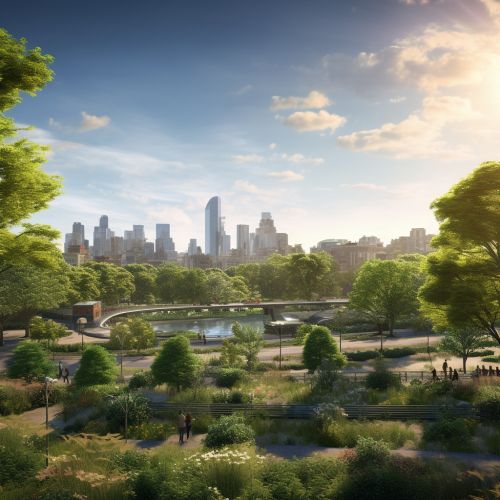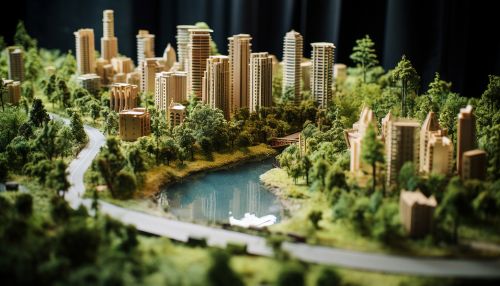Urban Ecology
Introduction
Urban ecology is a subfield of ecology that focuses on the study of ecosystems in urban environments. This field of study is characterized by the interaction of human and ecological processes in urban areas, and the effects of these interactions on biodiversity and ecosystem services[^1^].


History and Development
The concept of urban ecology emerged in the late 19th century, with early studies focusing on the distribution of plants and animals in cities[^2^]. The field has since evolved to encompass a broader range of topics, including urban planning, landscape architecture, and environmental health.
Urban Ecosystems
Urban ecosystems are complex and dynamic systems that include both the built environment (buildings, roads, and other infrastructure) and the natural environment (parks, rivers, and other green spaces). These ecosystems are shaped by a variety of factors, including human activity, climate, and geography[^3^].


Human and Ecological Interactions
In urban ecosystems, human and ecological processes are closely intertwined. Human activities, such as construction and transportation, can have significant impacts on biodiversity and ecosystem services. Conversely, the natural environment can also influence human health and well-being[^4^].
Biodiversity in Urban Areas
Despite the challenges posed by urbanization, many species have adapted to urban environments. Urban areas can support a surprising amount of biodiversity, including a variety of plants, birds, and insects[^5^].


Ecosystem Services in Urban Areas
Urban ecosystems provide a range of ecosystem services, including air and water purification, climate regulation, and recreational opportunities. These services contribute to the quality of life in cities and can have significant economic value[^6^].
Challenges and Opportunities
Urban ecology faces several challenges, including habitat fragmentation, pollution, and climate change. However, it also presents opportunities for conservation and sustainable development. By integrating ecological principles into urban planning, it is possible to create cities that are both livable and environmentally friendly[^7^].


See Also
References
[^1^]: Alberti, M. (2015). Eco-evolutionary dynamics in an urbanizing planet. Trends in Ecology & Evolution, 30(2), 114-126. [^2^]: McDonnell, M. J., Pickett, S. T., Groffman, P., Bohlen, P., Pouyat, R. V., Zipperer, W. C., ... & Medley, K. (1997). Ecosystem processes along an urban-to-rural gradient. Urban Ecosystems, 1(1), 21-36. [^3^]: Pickett, S. T., Cadenasso, M. L., Grove, J. M., Boone, C. G., Groffman, P. M., Irwin, E., ... & Warren, P. (2011). Urban ecological systems: Scientific foundations and a decade of progress. Journal of Environmental Management, 92(3), 331-362. [^4^]: Tzoulas, K., Korpela, K., Venn, S., Yli-Pelkonen, V., Kaźmierczak, A., Niemela, J., & James, P. (2007). Promoting ecosystem and human health in urban areas using Green Infrastructure: A literature review. Landscape and Urban Planning, 81(3), 167-178. [^5^]: McKinney, M. L. (2008). Effects of urbanization on species richness: A review of plants and animals. Urban Ecosystems, 11(2), 161-176. [^6^]: Bolund, P., & Hunhammar, S. (1999). Ecosystem services in urban areas. Ecological Economics, 29(2), 293-301. [^7^]: Niemelä, J. (1999). Ecology and urban planning. Biodiversity and Conservation, 8(1), 119-131.
